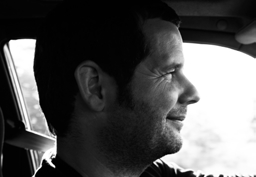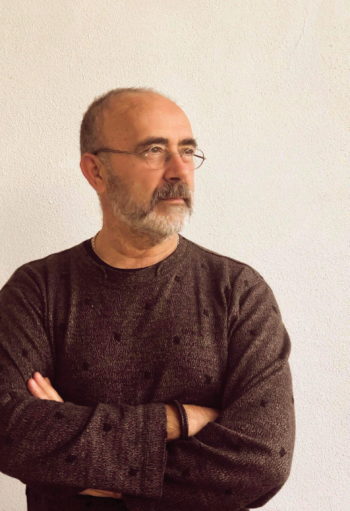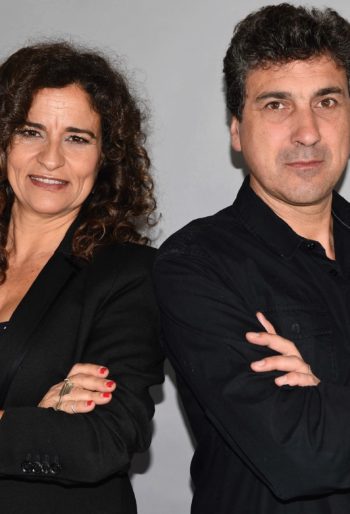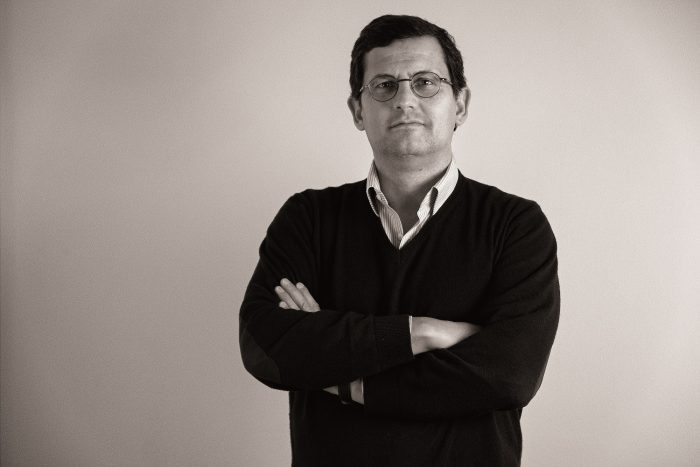A conversation with Arch. João Góis

A conversation with Arch. João Góis
'I always try to reflect, in the projects, the personality of their owners. Manage customers' anxieties and choices. There is no better satisfaction for an architect that people live their homes to the full. ’
How did you come to like architecture? When did you decide to create your studio?
I wanted to be a pilot but I’ve failed the admission to the aviation academy. As I had a very close relationship with projects, due to my father, who is an electrical engineer, and with some architects, such as prof. Taínha, Maurício Vasconcelos, with whom my father worked; I ended up studying architecture, which was a discovery, as I found what I really like to do. I always wanted to create my studio. On a kind of suicidal act, while working with the architect Byrne 5 or 6 years ago, I thought the time was right, but arch. Byrne, with his enormous generosity, indicated me to work with arch. Francisco Mangado, a great Spanish architect. I ended up going to Pamplona for two years to coordinate a giant project in Palma de Mallorca, the Palma de Mallorca’s Congress Palace. I always wanted to come back and when I decided to do so, both arch. Byrne and arch. Francisco Mangado, continued to partner with me, which was fundamental for the start of my studio. Schools are moments to learn, but then we have to go our way.
How do you define your way of thinking and doing architecture?
In my projects, I always try to be as close as possible to people, to customers. There is a house, which I rehabilitated with eng. Miguel Villar, at Joaquim António de Aguiar Street, where we managed to clearly reflect the owners’ personality. This is only possible if there is a close connection with the customer. I think it is essential to integrate the customers’ desires into their homes. I think that architecture cannot impose anything, it must manage customers’ anxieties and choices. It is important to create a coherence and common thread, but there is no greater satisfaction for an architect than feeling that people live their homes to the full. The first meetings are always at the clients’ house because the house says a lot about them. I can do a project in my head just based on that observation. I see where they feel comfortable and realize what they like by the way they act in their environment. I am also very critical of my work.
What has changed since the beginning of your journey?
Things have changed a lot in the last 10 years, in construction in general, and I think that architects are increasingly withdrawn from what we learned in college. When I left college I had the privilege of working with the arch. Byrne, a completely different reality from what I face today in my studio. My clients are different, it is not a public work, and we have to adapt to the new realities. I have many rehabilitation projects, which is great. They are fantastic challenges because we have to understand how to intervene in order to find solutions that at the same time live a mark of our time. It is necessary to feel where to intervene, where to rehabilitate, where to leave history and where to leave our mark. I think that architecture has a lot of chance involved, there are things that surprise us regardless of how much we master the project. And in rehabilitation it happens a lot, it is the power of the existing construction. Then we have partnerships that allow us to participate in larger projects. We, the younger ones, always have a lot to learn from the most experienced architects. And only then can we be involved in these larger projects. Participating in works outside the country is also very enriching and stimulating. In addition, due to the crisis, we ended up creating very close relationships with engineering companies. And in the end, these connections lead to others. What we do is winning the trust of companies, through our work, so that we can have many types of challenges.
How do you see contemporary architecture in Portugal?
What national architecture lacks today is an influence on fundamental decision points, which has ceased to exist. We are very stubborn with our ideas but we have no availability for that. I know that in the last mandates of the Order there has been an effort to improve this situation, but it is a long-term work. It is essential to be intervening in the laws that manage our activity. Architecture cannot be just a project. It is essential to have architects in all areas of expertise. We have the example of councilman Manuel Salgado, but there would have to be much more like him. We don’t have a city or a country strategy. It is not an overnight job, it is a work of generations. I’ve tried, I was involved in two mandates and I realized that there are a lot of people with a lot of capacity, and interest, but that it is very difficult due to the lack of participation of architects. The Order has a statute problem, the area of operation is very small and the issues surrounding architecture are very wide. Architects, in general, became very individualized, isolated from the rest of the world. There is a lot of competitiveness and little help. There is a lack of consensus, commitment and humility.
What are the greater constraints when performing your activity?
What really affects architecture are the financial aspects, the fees. Architecture is research, investment, time, and there is no regulation on this issue. Our work has been devalued. We are obliged to a simplification exercise that does nothing good for architecture. We do not all work with the same gauge, which makes it very difficult to present winning proposals. Currently, it is impossible to have long-term contracts with our employees, there is a constant renovation in the studio since the labor laws tend to penalize us a lot. The income in the studio is so fickle that it is impossible to estimate how the year will go. I have to set the alarm to go home, work is never done, and it is not even paid. I haven’t counted my hours at work for a long time. If there was control in the fee definition, we would know better what to expect.
And where does the connection to BETAR come from?
The connection with BETAR started through my father who worked with eng. José Venâncio. Before finishing the course, I did my first tender with my colleagues Alexandre Berardo, António Albuquerque and Pedro Batista, under the guidance of prof. Luís Pereira and eng. Venâncio was, at the time, our structural engineer. We won an honorable mention. Then we started working with eng. Miguel Villar through the arch. Gonçalo Byrne. And now we try to work with BETAR whenever possible since it gives us total confidence. Miguel is impressive, it is easy to communicate with him, he immediately understands what we want, and in what technique is concerned, you won’t find better. In all the projects that we did with BETAR, there was a significant improvement because of him. And that is the only way that the process can run well. The success of architecture depends a lot on engineering. We have to be in harmony with the other specialties.
This interview is part of the Artes & Letras Magazine # 69, November 2015
Partially automatic translation from portuguese: some expressions may differ from their actual meaning.
News & Interviews
A conversation with Arch. Alberto Caetano
‘One of the most important things for an architect is […] to get a sense of the history of architecture, because if there is Corbusier, Mies and Siza, it is because there were Miguel Ângelo, Bramante and Borromini’ Read more
A conversation with Arch. Flávio Tirone
We have a triangle of priorities: the public, the artists and the technicians. We made it our mission to ensure that no colleague, artist or stage technician had to step on a stage in bad condition Read more
A conversation with Arch. Rodrigo Sampayo
'Brandchitecture is based on the philosophy that a successful organization is sustained by motivated teams. It is with this vision that OPENBOOK has developed projects that reflect its clients' DNA' Read more




